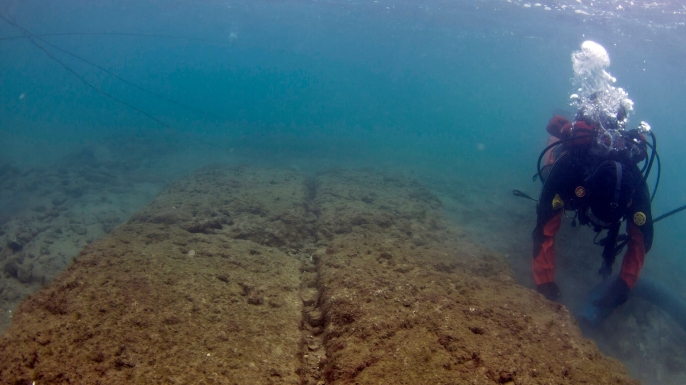Bjørn Lovén and his colleagues set out to find the mysterious Athenian naval bases in 2001, as part of the Zea Harbor Project. The investigation required the archaeologists to do a thorough search of the land and water in hopes of finding Zea and Mounichia, the ancient navel bases. The bases are recorded to date back to 520 and 480 B.C. and the Battle of Salamis. These naval structures were built with the capacity to hold hundreds of vessels. Researchers believe that this structure is now one of the biggest structures to come out of the ancient world.
In 2010, the archaeologists began searching the Northern side of Mounichia, that had been previously used for fishing. Upon relocation, Bjørn’s team found six ship-sheds, which were used to house and protect war vessels. These ancient vessels were known as triremes. During their prime, these vessels were built to be stationed in Piraeus under Themistocles rule. The triremes were built out of fear after Themistocles predicted that Greece would be attacked by the powerful Xerxes. However, the people of Greece needed to build a massive structure just to hold all of these triremes.
Although the triremes were very powerful vessels, they needed to be protected. Triremes were extremely vulnerable when they were in battle as well as stationary. Exposure to the sun would eventually dry out and force the timber to shrink, causing the vessels to leak. In addition to sun damage, the vessels could be seriously damaged by rain water. Constant exposure to the rain would cause the timber to swell and decay over time. The triremes needed to be protected and kept away from the harsh elements.
The solution to hiding the triremes was to build a massive structure that would protect the vessels from any damage. So the naval bases were built, and by the late fourth century the bases had the ability to store over 350 vessels. These sheds measure to be 6 1/2 meters wide and 80 meters long. They included a two long ramps that were positioned on each side at an angle. The sheds were constructed out of stone collonades, tiled roofs, and walls to protect the vulnerable vessels. According to Bjørn the vessels were so large that it took around 140 men to store the triremes inside the shed.
Researchers believe that two thirds of the ships that fought in the Battle of Salamis came from Athens. Themistocles precaution saved Greece and ended the Persian invasion. These vessels were apart of a pivotal moment in history and Bjørn and his team finally found the ancient ship-sheds.


